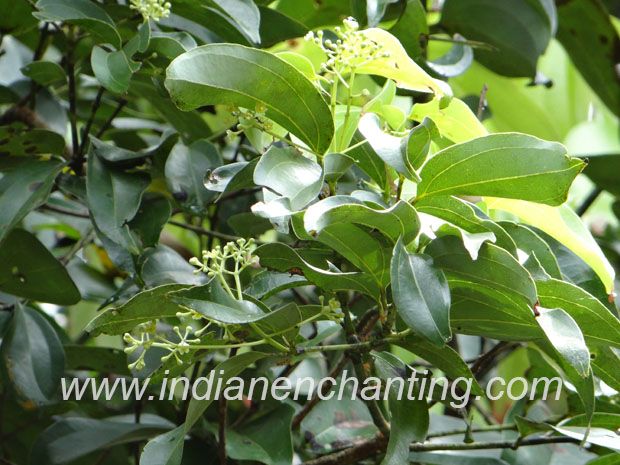
Cinnamomum verum Presl
Genus: Cinnamomum
Botanical name: Cinnamomum verum Presl.
PLANT NAME IN DIFFERENT LANGUAGES
English: Cinnamon Tree
Sanskrit: Tvak, Twak, Cocham, Darusita, Tamala
Hindi: Dalchini, Daruchini
Malayalam: Ilavangam, Elavangam, Karuva, Vayana
MEDICINAL PROPERTIES
Cinnamomum verum trees are 10–15 metres (32.8–49.2 feet) tall. The leaves are ovate-oblong in shape, 7–18 cm (2.75–7.1 inches) long. The flowers, which are arranged in panicles, have a greenish color, and have a distinct odor. The fruit is a purple 1-cm berry containing a single seed
he bark is used to a limited extent in medicine. It is aromatic, astringent, stimulant, expectorant and carminative. It possesses the property of checking nausea and vomiting. As a stimulant it is beneficial in cramps of the stomach, gastric irritation, and paralysis of tongue. The ground cinnamon shows lipolytic activity. It is useful in diarrhoea and dysentery. Externally the bark is used in neuralgia, rheumatism and toothache. A decoction of the bark is reported to be used for cancer of stomach, rectum and uterus.
The root bark oil is used as a stimulant in amenorrhoea. It is also antiseptic and is used in gonorrhoea. Locally it is used as an application in neuralgia
